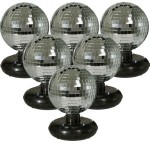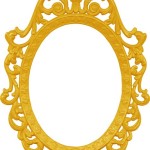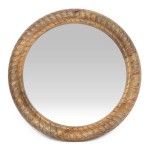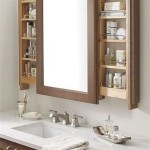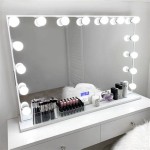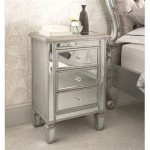How To Secure a Bathroom Mirror
Bathroom mirrors, essential for daily routines, require secure installation to prevent accidents and damage. Choosing the correct mounting method depends on the mirror's size, weight, and the wall's construction. This article outlines various techniques for securely mounting a bathroom mirror.
Assessment and Preparation
Before initiating the installation process, careful assessment of the mirror and the wall is crucial. Determine the mirror's dimensions and weight. Heavier mirrors necessitate more robust mounting solutions. Inspect the wall material, identifying whether it is drywall, plaster, concrete, or tile. This determines the appropriate fasteners and anchors.
The chosen location should provide adequate lighting and convenient access. Mark the desired mirror position on the wall using a level to ensure straight alignment. Consider the height of individuals using the mirror for optimal placement.
Utilizing Mirror Adhesive
Mirror adhesive, also known as mastic, offers a strong and durable bond for smaller to medium-sized mirrors on smooth surfaces. The wall surface must be thoroughly cleaned and dry before adhesive application. Apply the adhesive to the back of the mirror in a consistent pattern, following the manufacturer's instructions for spacing and quantity.
Carefully position the mirror on the marked location, applying even pressure. Temporary supports, such as tape or wooden blocks, can hold the mirror in place while the adhesive cures. Allow the adhesive to dry completely according to the manufacturer's recommended curing time before removing any supports.
Employing Mirror Clips
Mirror clips provide a mechanical fastening method suitable for various wall types. These clips are installed on the wall, gripping the edges of the mirror. Measure and mark the clip locations on the wall, ensuring proper spacing and alignment. Drill pilot holes for the clip screws, using appropriate anchors if necessary based on the wall material.
Securely attach the clips to the wall. Carefully position the mirror within the clips, ensuring it is firmly seated. Some clip designs may require tightening screws to secure the mirror in place.
J-Channels and Z-Clips for Concealed Mounting
J-channels and Z-clips offer a concealed mounting system, providing a clean, frameless appearance. J-channels are installed on the bottom and sides of the mirror's designated wall space. The mirror is then inserted into the channels, creating a secure hold.
Z-clips consist of two interlocking pieces. One part is attached to the wall, while the other is attached to the back of the mirror. The two pieces interlock, securing the mirror to the wall without visible hardware.
Considerations for Heavy Mirrors
Heavy mirrors require extra support to ensure safe and stable mounting. For exceptionally heavy mirrors, consider using a combination of adhesive and mechanical fasteners. Reinforced backing boards, such as plywood, can be installed on the wall before mirror installation to provide additional support.
Consult a professional installer for extremely large or heavy mirrors to ensure safe and appropriate mounting techniques are employed. They can assess the specific circumstances and recommend the most suitable method based on the mirror's weight, size, and the wall's structural integrity.
Wall Anchors and Fasteners
The selection of appropriate wall anchors and fasteners plays a critical role in securely mounting a bathroom mirror. Drywall requires specific anchors, such as toggle bolts or hollow-wall anchors, to provide adequate support. Concrete or tile walls may necessitate masonry anchors and screws.
Always choose fasteners and anchors rated for the weight of the mirror. Using inadequate hardware can result in the mirror becoming loose or falling, posing a safety hazard.
Safety Precautions
When working with glass mirrors, always wear appropriate safety gear, including gloves and eye protection. Handle the mirror with care to avoid chipping or cracking. If using power tools, follow all safety guidelines provided by the manufacturer.
Ensure adequate ventilation when using adhesives or sealants. Consult the product's safety data sheet for specific ventilation recommendations. Clean up any spills or debris promptly to prevent accidents.
Maintenance and Inspection
Periodically inspect the mirror and its mounting hardware to ensure it remains securely attached. Tighten any loose screws or clips as needed. If using adhesive, check for any signs of deterioration or weakening. If any issues are detected, address them promptly to prevent the mirror from becoming loose or detaching from the wall.

Tutorial How To Hang A Bathroom Mirror The Diy Playbook

How To Install A Mirror Without Frame Merrypad

Diy Bathroom Mirror Frame Without Removing Clips Her Happy Home

Tutorial How To Hang A Bathroom Mirror The Diy Playbook

How To Frame A Mirror
:strip_icc()/DesireeBurnsInteriors1-f76d25cad90041c88fbae4a7dc10aab4.jpg?strip=all)
2 Simple Ways To Hang A Frameless Mirror

How To Install A Mirrorchic Bathroom Mirror Frame Momhomeguide Com

How To Hang A Heavy Mirror Diy Family Handyman

How To Frame A Bathroom Mirror Over Plastic Clips Somewhat Simple

How To Frame Out That Builder Basic Bathroom Mirror For 20 Or Less

